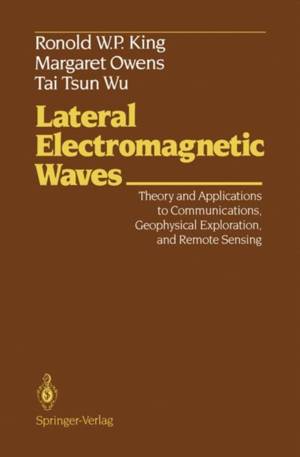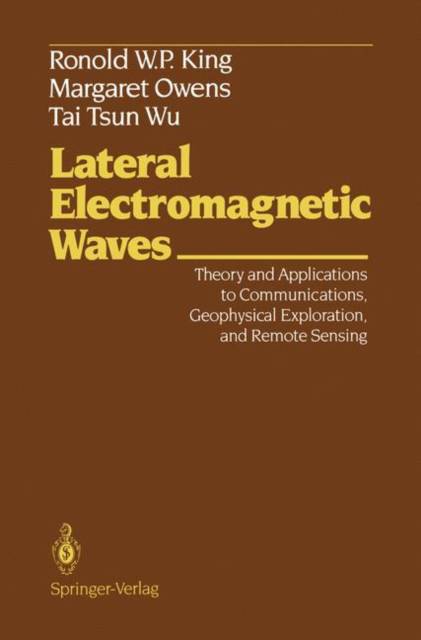
- Afhalen na 1 uur in een winkel met voorraad
- Gratis thuislevering in België vanaf € 30
- Ruim aanbod met 7 miljoen producten
- Afhalen na 1 uur in een winkel met voorraad
- Gratis thuislevering in België vanaf € 30
- Ruim aanbod met 7 miljoen producten
Zoeken
Lateral Electromagnetic Waves
Theory and Applications to Communications, Geophysical Exploration, and Remote Sensing
Ronold W P King, Margaret Owens, Tai T Wu
Paperback | Engels
€ 181,95
+ 363 punten
Omschrijving
The propagation of waves along and across the boundary between two media with different characteristic velocities is much more complicated when the source is on or near the boundary than when it is far away and the incident waves are plane. Examples of waves generated by localized sources near a boundary are the electromagnetic waves from the currents in a dipole on the surface of the earth and the seismic waves from a slip event in a fault in the earth's crust like the San Andreas fault in California. Both involve a type of surface wave that is called a lateral wave in electro- magnetics and a head wave in seismology. Since the two are analogous and the latter is more easily visualized, it is conveniently used here to introduce and describe this important type of surface wave using the data of Y. Ben- Zion and P. Malin ("San Andreas Fault Zone Head Waves Near Parkfield, CA," Science 251, 1592-1594, 29 March 1991).
Specificaties
Betrokkenen
- Auteur(s):
- Uitgeverij:
Inhoud
- Aantal bladzijden:
- 746
- Taal:
- Engels
Eigenschappen
- Productcode (EAN):
- 9781461391760
- Verschijningsdatum:
- 14/10/2011
- Uitvoering:
- Paperback
- Formaat:
- Trade paperback (VS)
- Afmetingen:
- 156 mm x 234 mm
- Gewicht:
- 1065 g

Alleen bij Standaard Boekhandel
+ 363 punten op je klantenkaart van Standaard Boekhandel
Beoordelingen
We publiceren alleen reviews die voldoen aan de voorwaarden voor reviews. Bekijk onze voorwaarden voor reviews.











